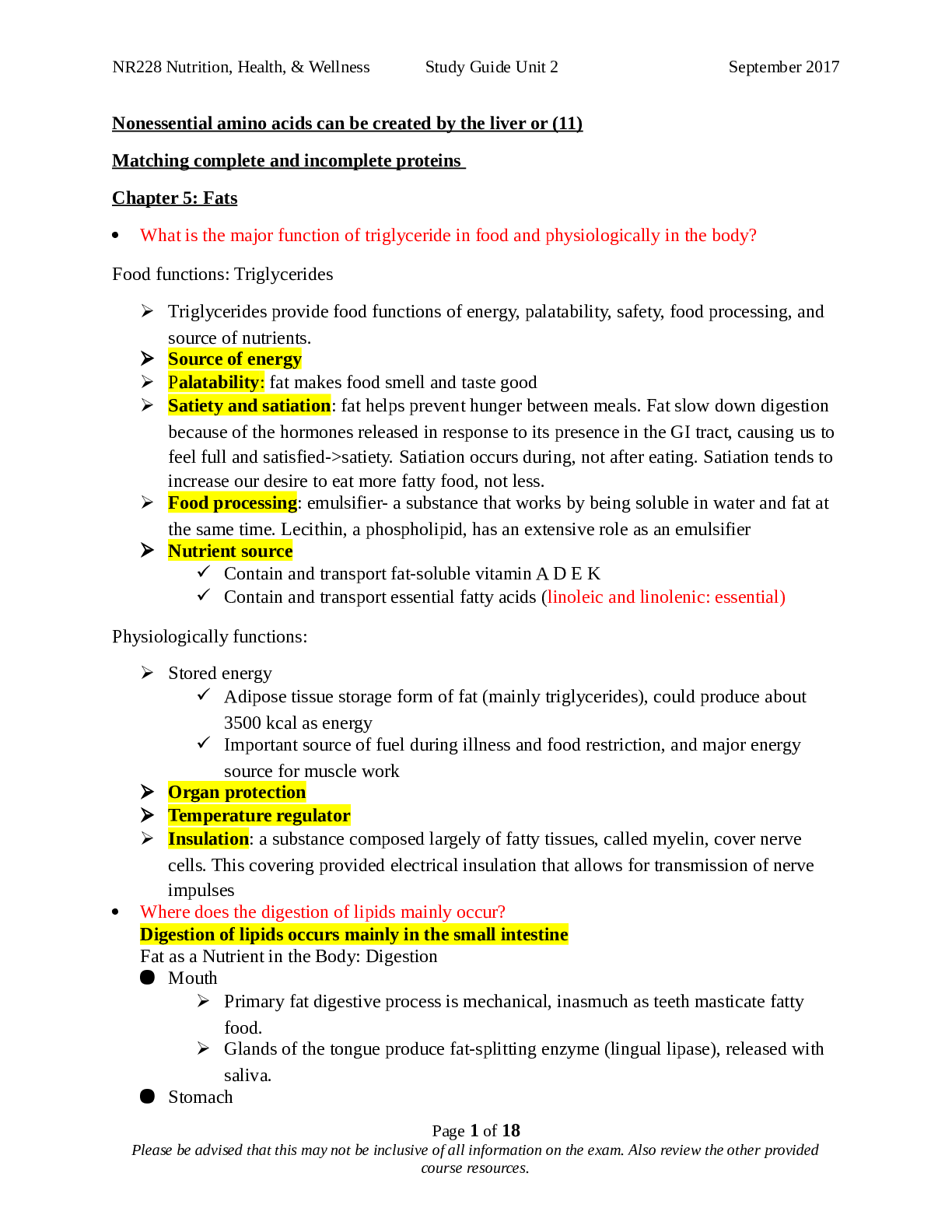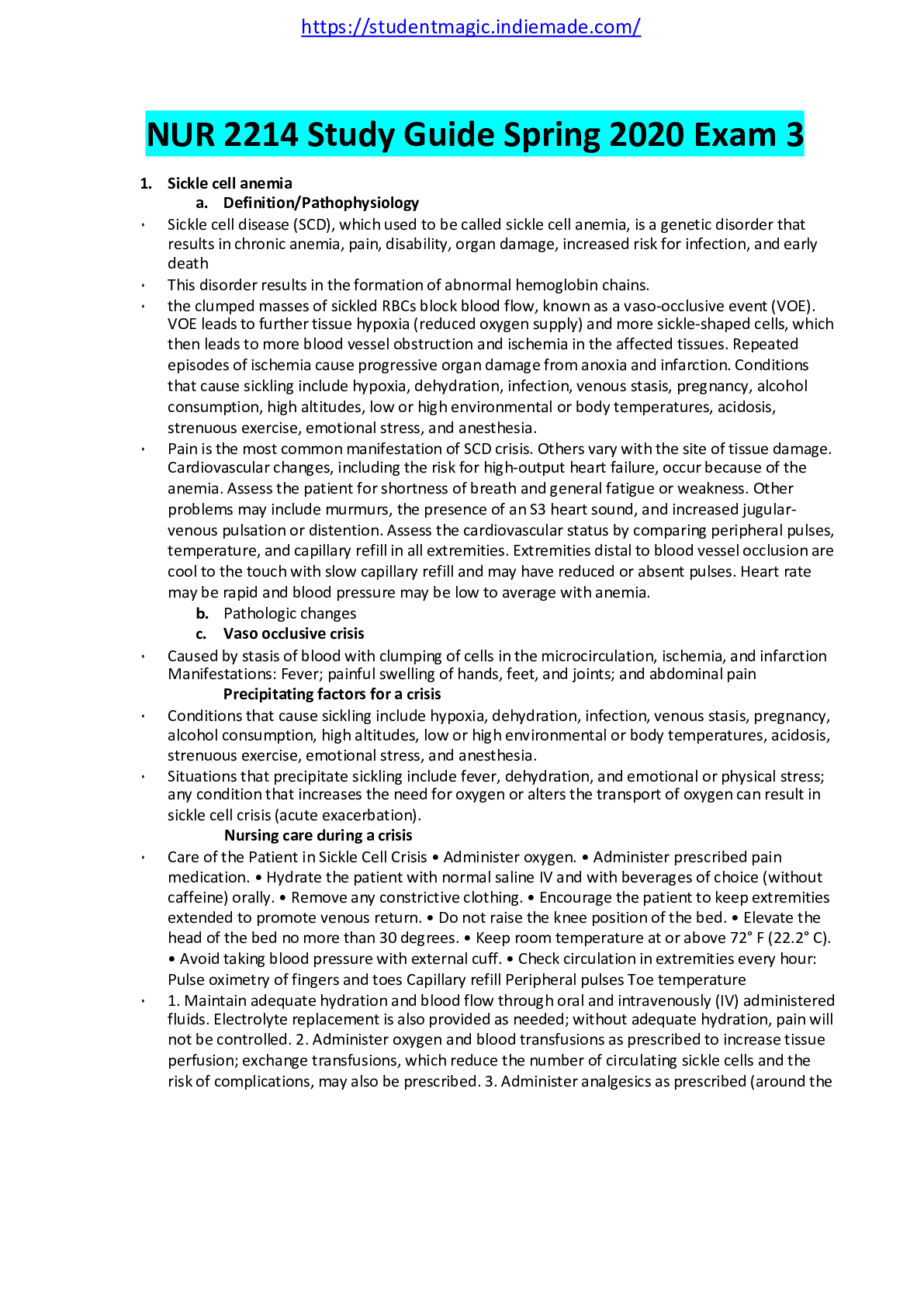Biology > STUDY GUIDE > ALL ABOUT BIO 235,,MIDTERM EXAM VERSION and B ,,,final exam,,complete study guide (All)
ALL ABOUT BIO 235,,MIDTERM EXAM VERSION and B ,,,final exam,,complete study guide
Document Content and Description Below
1. Describe the functions of blood. A. Blood: is a liquid connective tissue that consists of cells surrounded by a liquid extracellular matrix. The extracellular matrix is called blood plasma, and ... it suspends various cells and cell fragments. B. interstitial fluid: is the fluid that bathes body cells and is constantly renewed by the blood. C. functions of blood: Blood transports oxygen from the lungs and nutrients from the gastrointestinal tract, which diffuse from the blood into the interstitial fluid and then into body cells. Carbon dioxide and other wastes move in the reverse direction, from body cells to interstitial fluid to blood. Blood then transports the wastes to various organs—the lungs, kidneys, and skin—for elimination from the body. The blood has the following 3 general functions. I. Transportation: blood transports oxygen from the lungs to the cells of the body and carbon dioxide from the body cells to the lungs for exhalation. It carries nutrients from the gastrointestinal tract to body cells and hormones from endocrine glands to other body cells. Blood also transports heat and waste products to various organs for elimination from the body. II. Regulation: Circulating blood helps maintain homeostasis of all body fluids. Blood helps regulate pH through the use of buffers (chemicals that convert strong acids or bases into weak ones). It also helps adjust body temperature through the heat-absorbing and coolant properties of the water in blood plasma and its variable rate of flow through the skin, where excess heat can be lost from the blood to the environment. In addition, blood osmotic pressure influences the water content of cells, mainly through interactions of dissolved ions and proteins. III. Protection: Blood can clot, which protects against its excessive loss from the cardiovascular system after an injury. In addition, its white blood cells protect against disease by carrying on phagocytosis. Several types of blood proteins, including antibodies, interferons, and complement, help protect against disease in a variety of ways. [Show More]
Last updated: 1 year ago
Preview 1 out of 147 pages
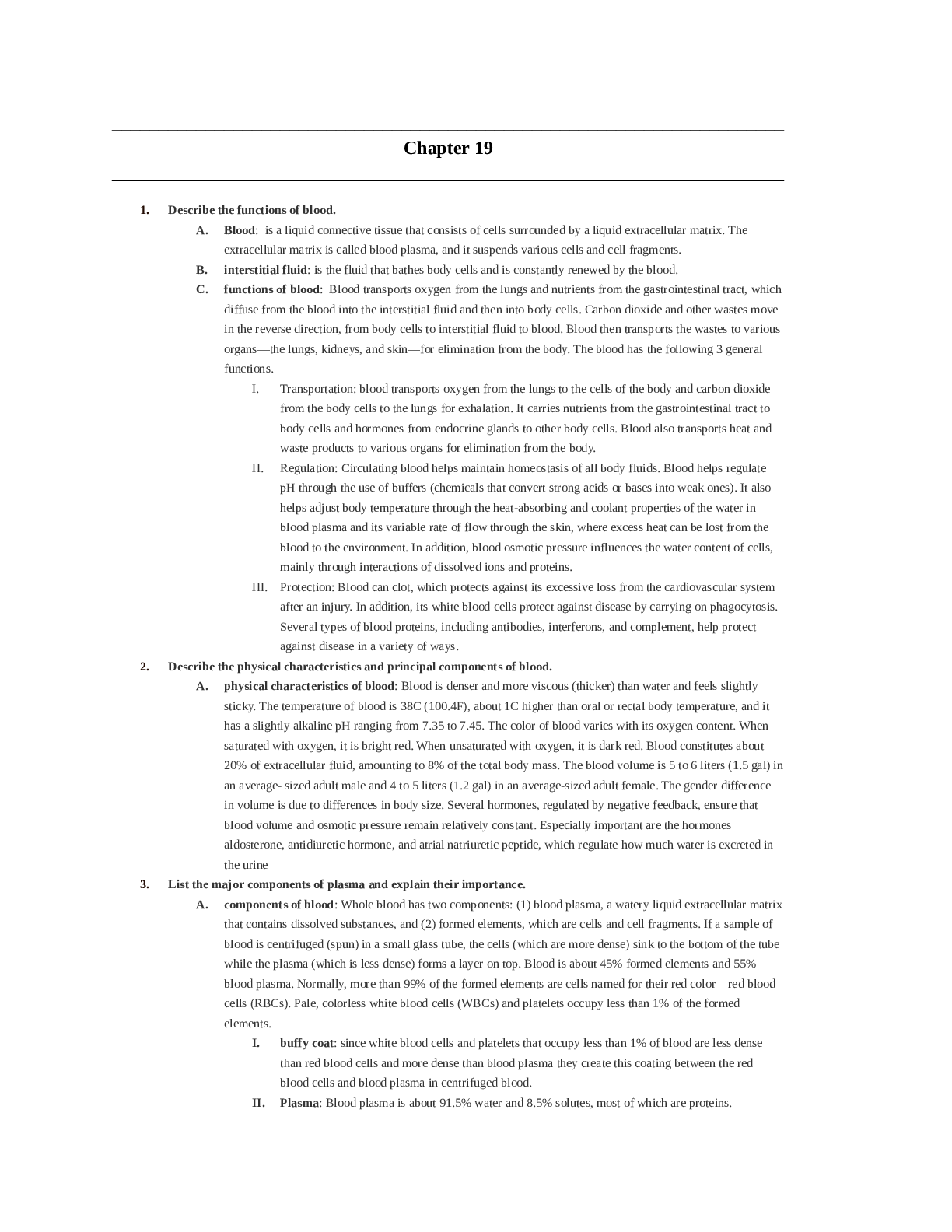
Reviews( 0 )
Document information
Connected school, study & course
About the document
Uploaded On
Apr 20, 2022
Number of pages
147
Written in
Additional information
This document has been written for:
Uploaded
Apr 20, 2022
Downloads
0
Views
30

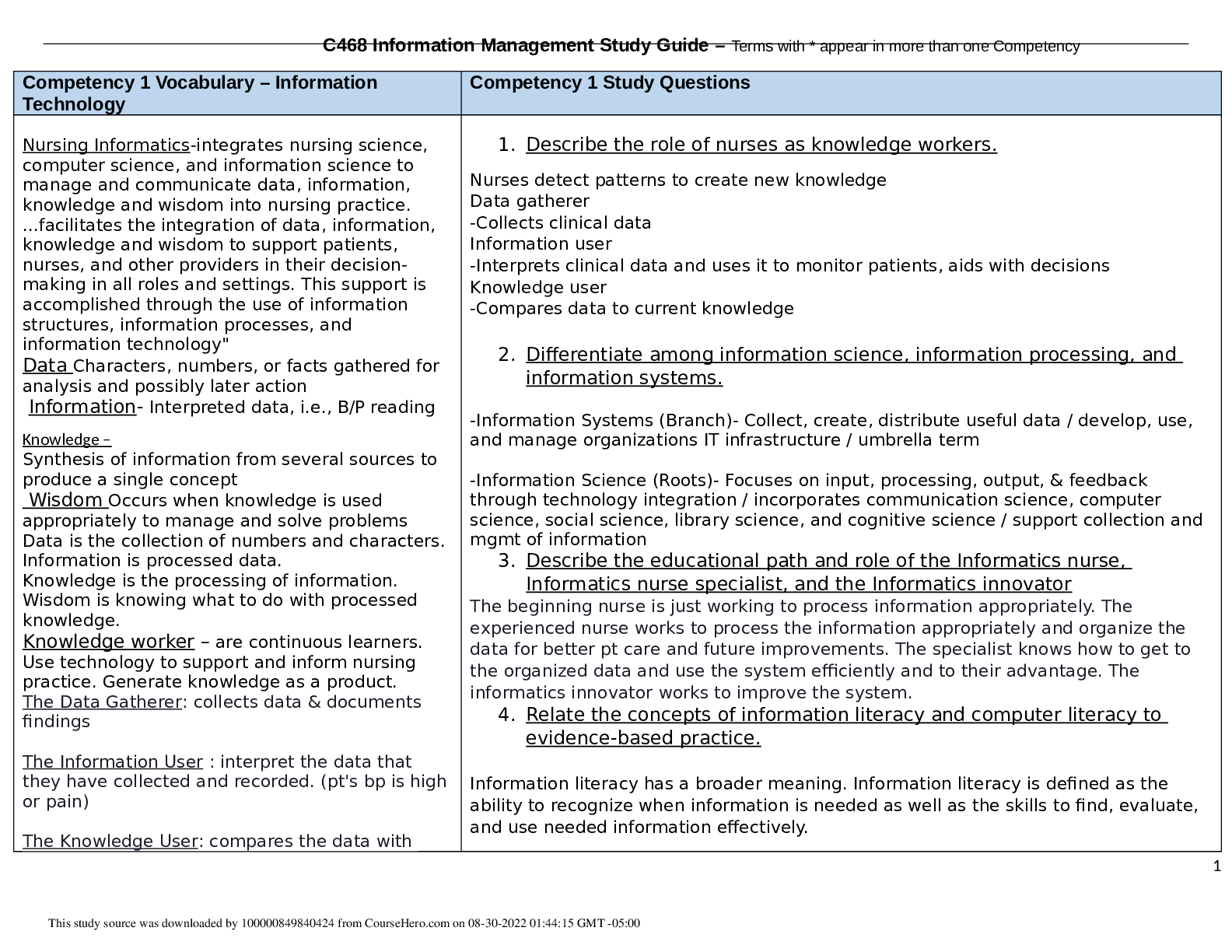
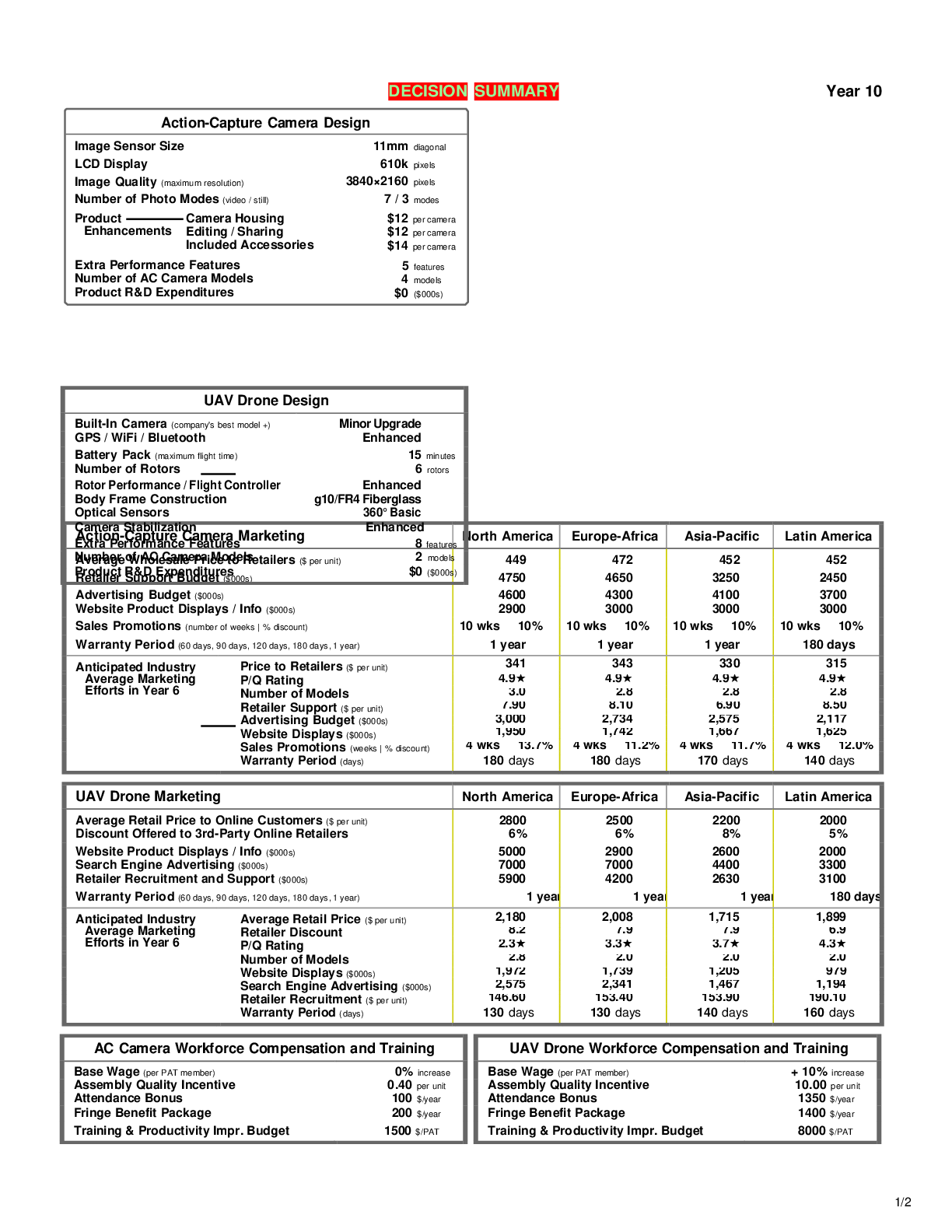



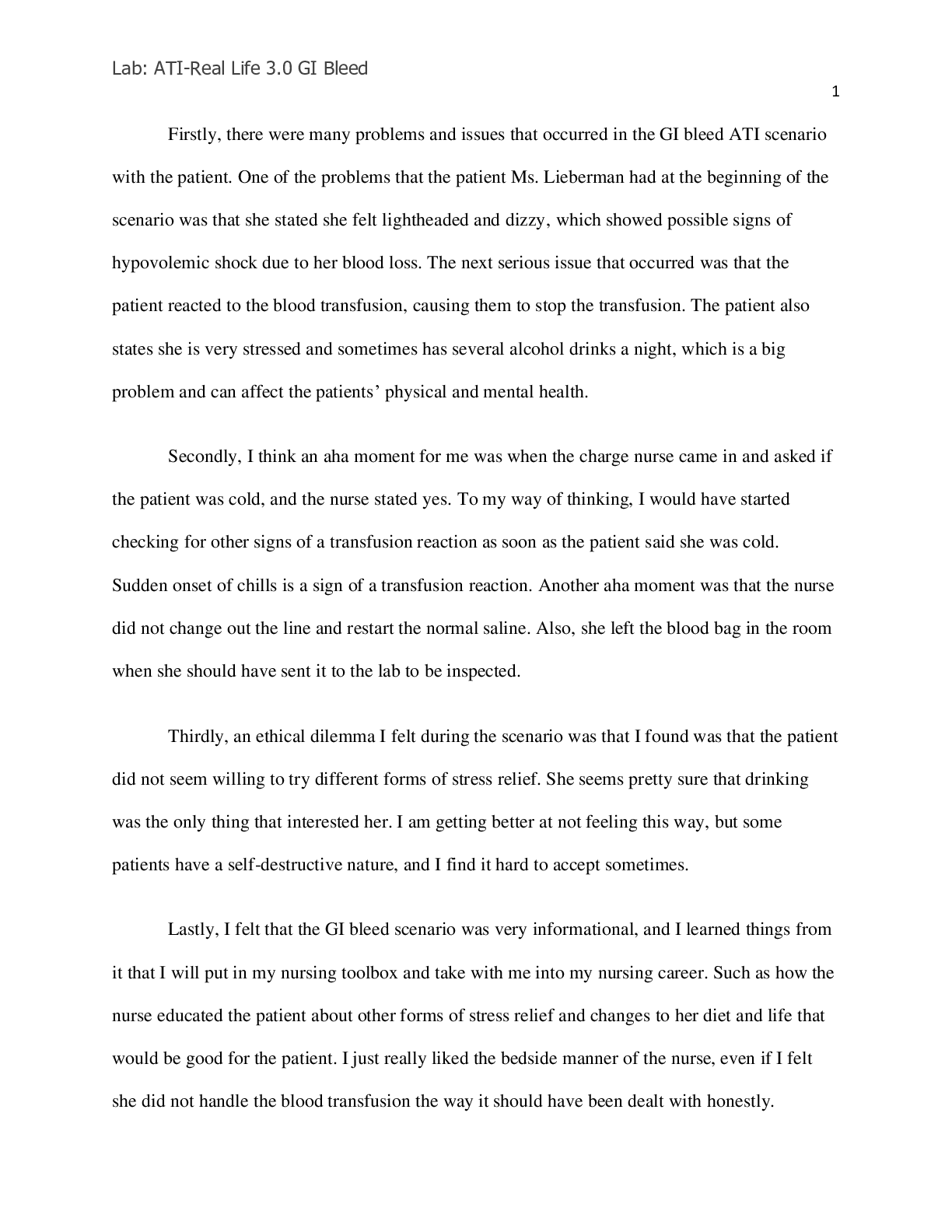
.png)
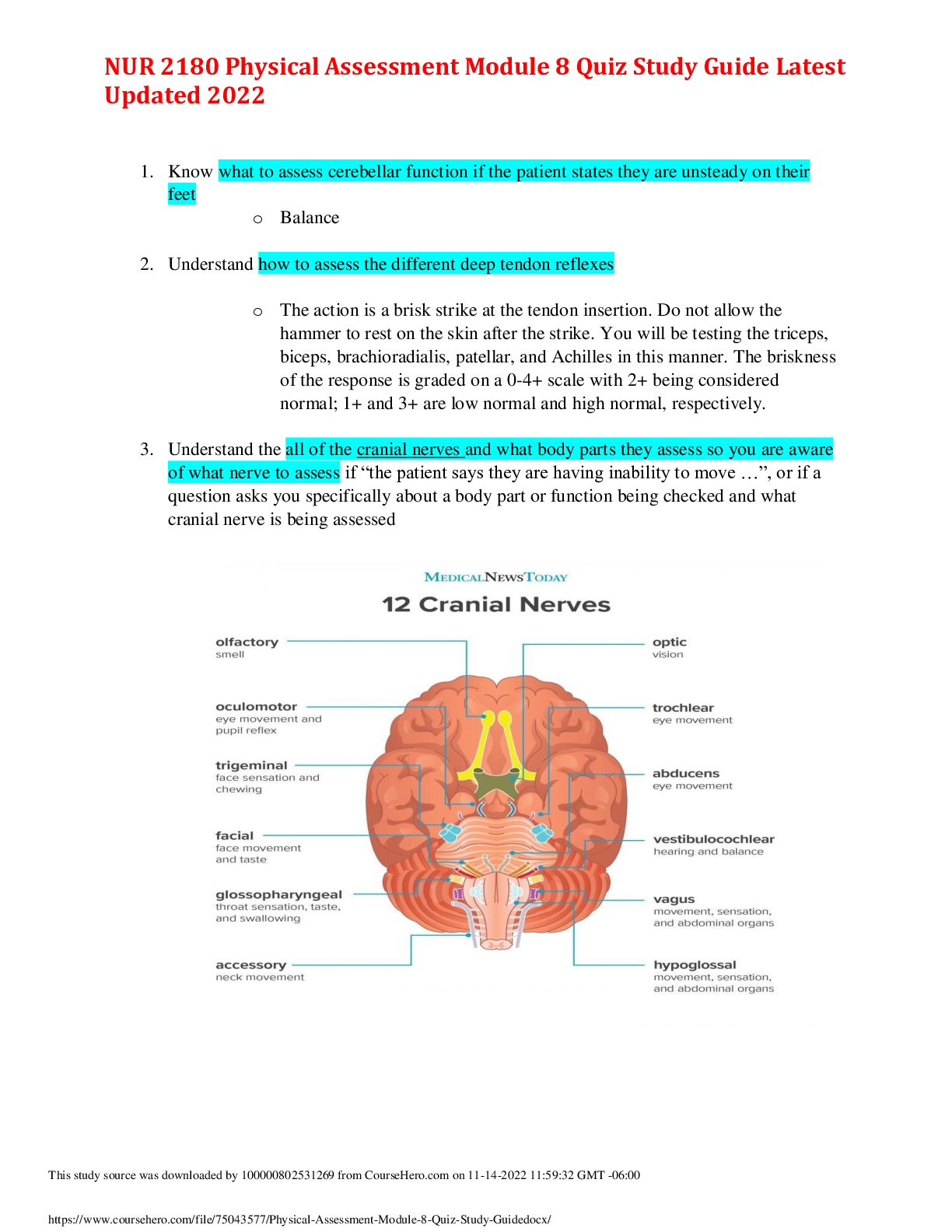
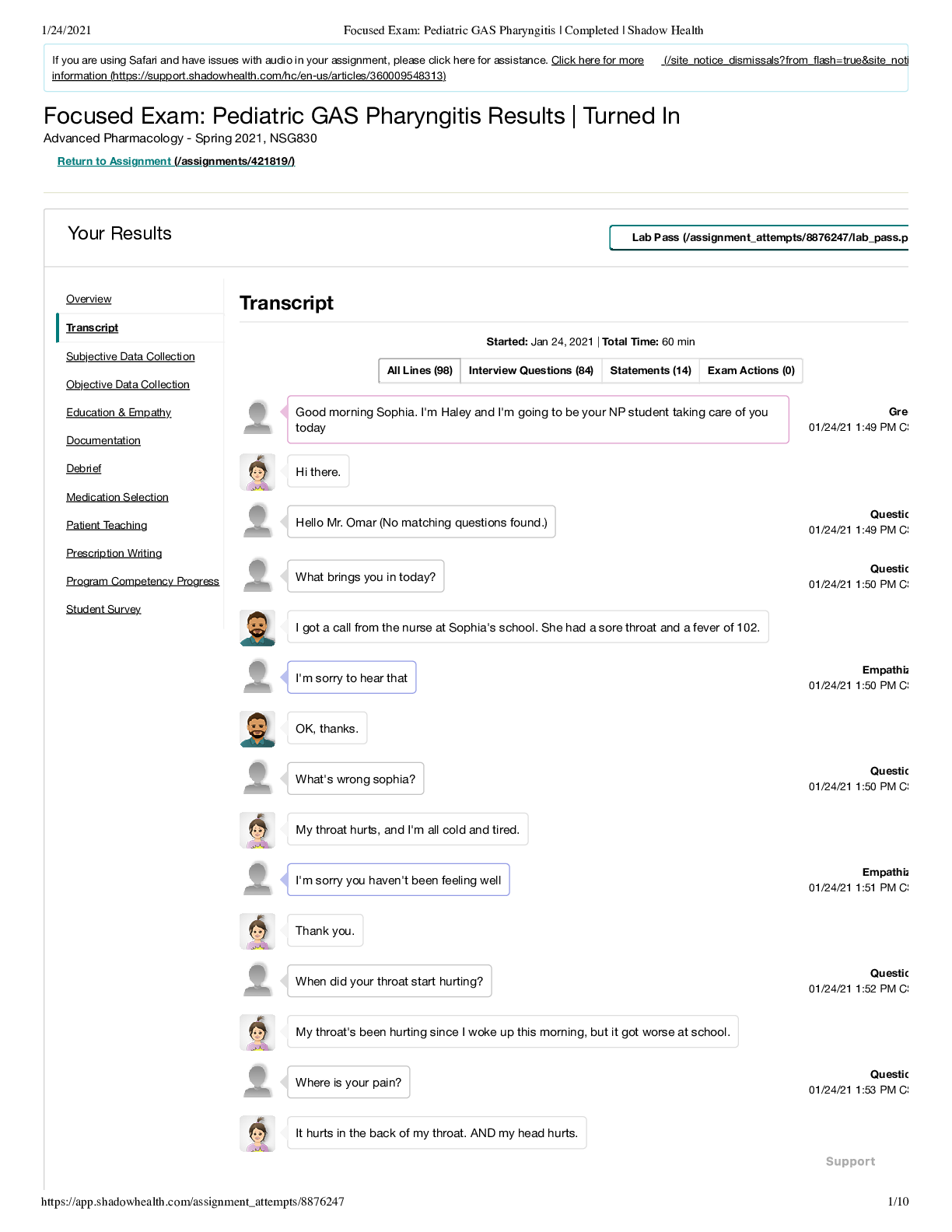
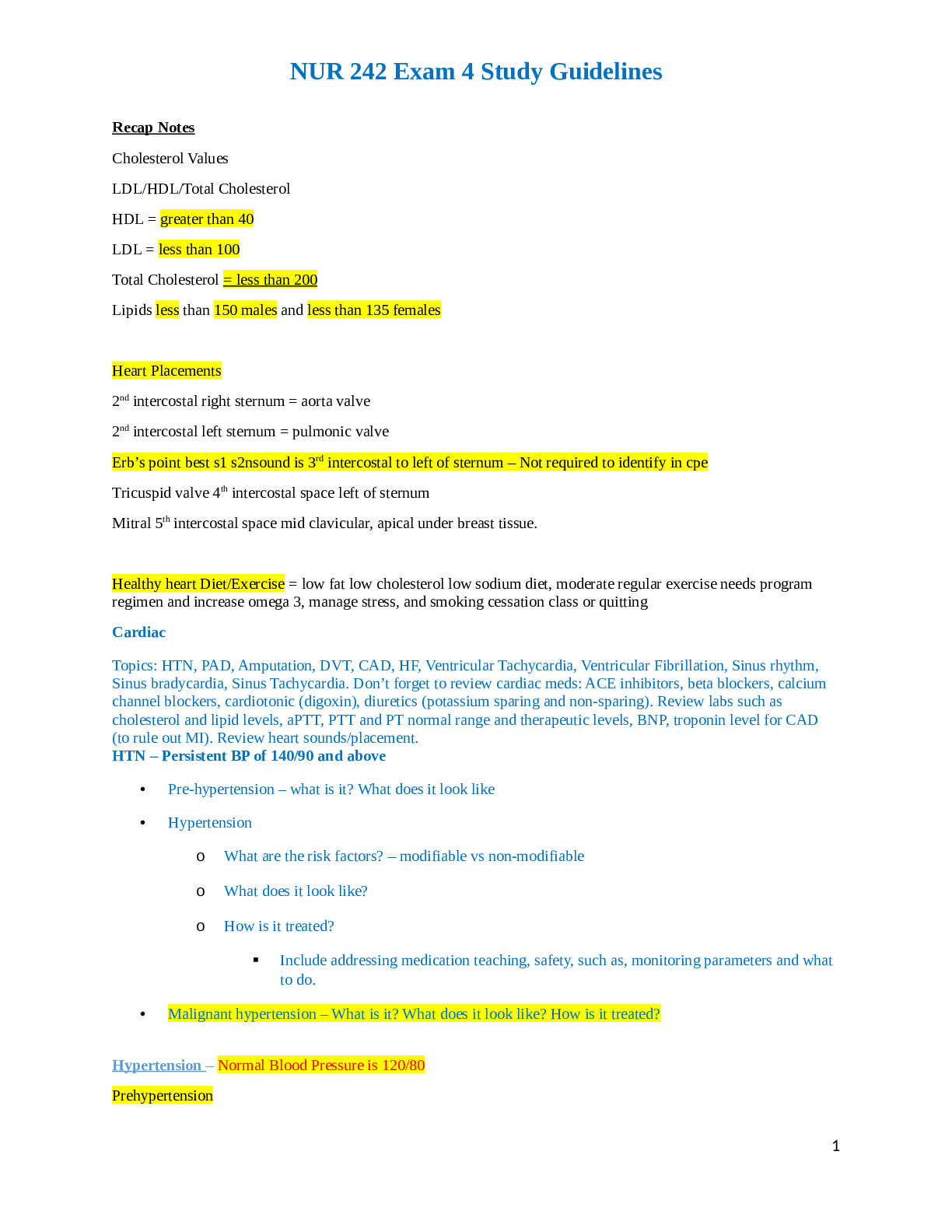

.png)
.png)
.png)







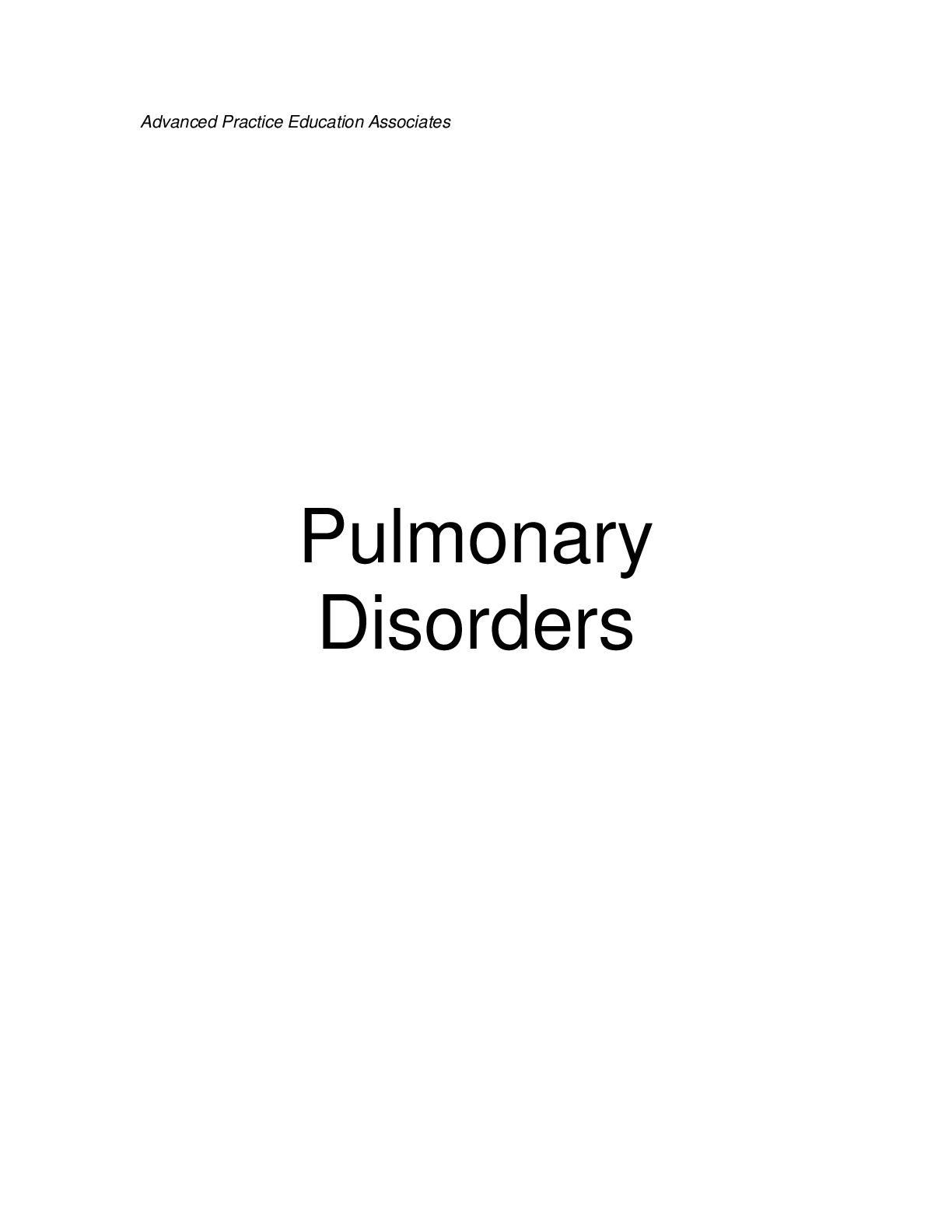
.png)





